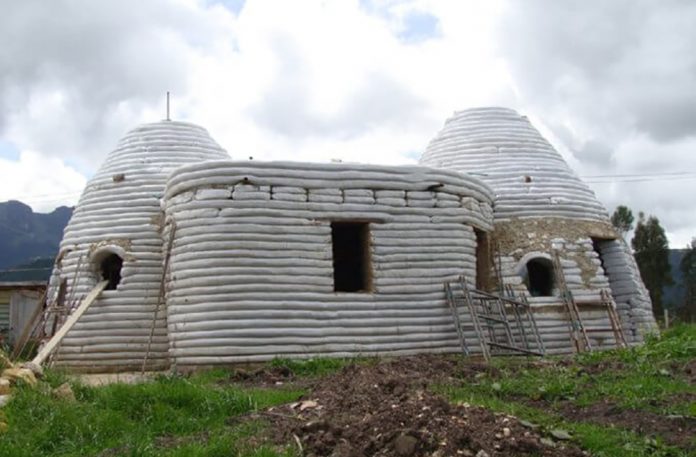The best kept secret of the environmentalists, and the worst nightmare of the concrete industry …
… the earthbag method means you can create a small shelter to withstand bullets, floods, hurricanes, storms and fires much better than a traditional home.
And all to a fraction of the cost!
Creating Earthbags is a hot topic in underground circles but still has to reach the mainstream.
The earthbag building system was first used by the military to build bunkers and temporary army structures, and became a family requirement in some war zones. Also, there are a few video guides on how to make your home an impregnable fortress.
And I’m pretty sure this method will become pretty popular among the survivalists and general cautious people. And here is why:
Indestructible
Earthbag buildings are difficult to prove and have some serious credentials:
The entire village of Sangachok has been flattened in Nepal’s recent earthquakes, except for one building. This school building is now being used as a shelter for the majority of the community who lost their homes to the quake. So wonder what makes up this building? That’s right, earthbags.
The soil-filled polypropylene sacks, laid like bricks and tamped into place, proved too strong to beat the 7.8 earthquake.
It looks just like a standard concrete building with its plaster, fastened to the bags by chicken wire mesh. This is all a lot tougher.
Using this approach, emergency shelters are now being set up in Nepal, based on the success of rebuilding in Haiti following their 2010 earthquake.


It was the military that first used the construction of earth and sandbags, and has been doing so for at least a century. The ability of earthbags to take bullets in and not let them out, used to make bunkers and temporary army buildings, makes them indispensable to those in war zones or to prepare for dangerous situations.
We don’t need to look too far to get evidence of the waterproof properties of the earthbag. Bags packed with soil or sand are used with great success to manage the floods worldwide. Although the burlap bags are widely used to degrade when exposed to water for a long period, polypropylene is fully water resistant, and is the perfect waterproofing option. For earth bag construction, the walls are constructed on top of simple trenches of rubble with French drains to keep rainwater away from the bags. For better results the first few bag courses are packed with gravel.
Related: 10 Survival Tricks You Did Not Think Of
Dirt cheap…
…literally!
You’ll still need to buy windows, doors, fixtures, fittings and roof materials, but the cost for the bulk of the construction is dramatically slashed.
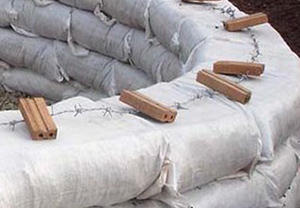

Fill them with soil from your own land and you can buy only barbed wire to complete your wall. It is set out in two strips between the courses to create tension between them.
The only cement you’ll need is enough to pour a concrete bond beam. For strength it is recommended to have a few rebar rods rammed vertically through the bags and cemented into the bond plate.
Finishing outer and inside plasters can differ depending on which choices best match your needs. Plasters based on concrete, lime, clay or earth will draw different price tags. Don’t be tempted to skip the plastering phase – the polypropylene bags degrade under prolonged exposure to UV. Chicken wire or fishing net draped over the bags before applying plaster creates superior force in the wall.
Sealed and varnished earth or soil cement floors provide a great low-cost alternative to concrete slabs, and aid with temperature control and insulation.
You’ll also save on shipping cost, since much of the material (soil) is already on site.
This method makes it easily buildable to access areas, ideal for those who want their shelter away from beaten track.
Construction costs are also being cut by the shortage of required equipment. Using a cement mixer or a pump, a shelter or house may be built during construction using needing to provide a source of electricity or water.
Of course, it depends on where you want to build and what finishes you choose, but a sizeable 500 square feet shelter can be built for $5,000 at an average of $10 per square foot with labor costs that are negligible to none.
Do it yourself
One of the best things about earthbag construction is that it’s so easy to do. In labor costs there is no need to shell out a lot of money. A team is going to speed things up, but even that can be done alone.
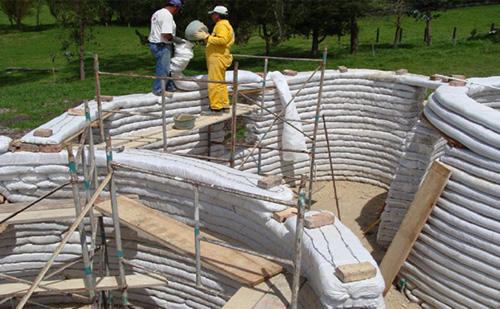

This also saves a lot of pressure by filling bags with earth where they are laid, instead of heaving them fully loaded.
Although frames for windows and doors can be built during construction just as in traditional block building, lintels need to be wider than normal to withstand earthbag weight. Pipes can be inserted between the courses for plumbing to be installed later.
Related: Where to Go When You Don’t Have a Nuclear Bunker
Freedom to innovate
Concrete blocks and other conventional forms of construction are perfect for constructing box-shaped buildings but not much else. Complicated shapes and innovative designs cause skyrocketing prices.
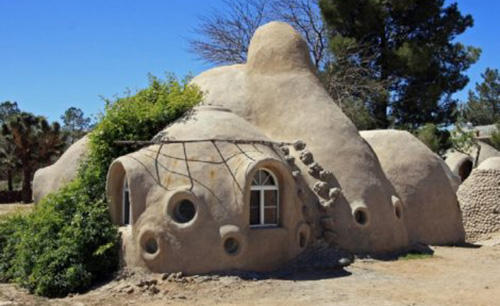

Earthbags are another matter, one of their principal benefits being their versatility. Vaulted ceilings and arches are easily reachable with earthbags, and their strength has been proved by scientific studies.
They deform rather than break under great loads, ensuring they can be patched after a disaster instead of being a complete write-off.
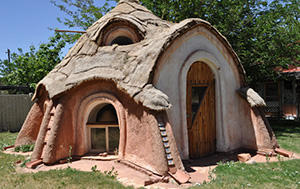

Semi-underground shelters built into hills or backfilled on top of are viable options and roundhouses are in fact the method of choice for resistance to hurricanes. Storm cellars and root cellars as well as earthbag cisterns, retaining walls and planters, are also possible. If you choose square or rectangular designs, that is no problem either, though rebar or buttresses would need to be reinforced in the corners.
Creating an Earthbag gives you the absolute freedom to build as you see it. If it’s an ultimate underground storm shelter or a multi-family homestead, earthbag construction will make your dreams accessible, attainable and sustainable.



